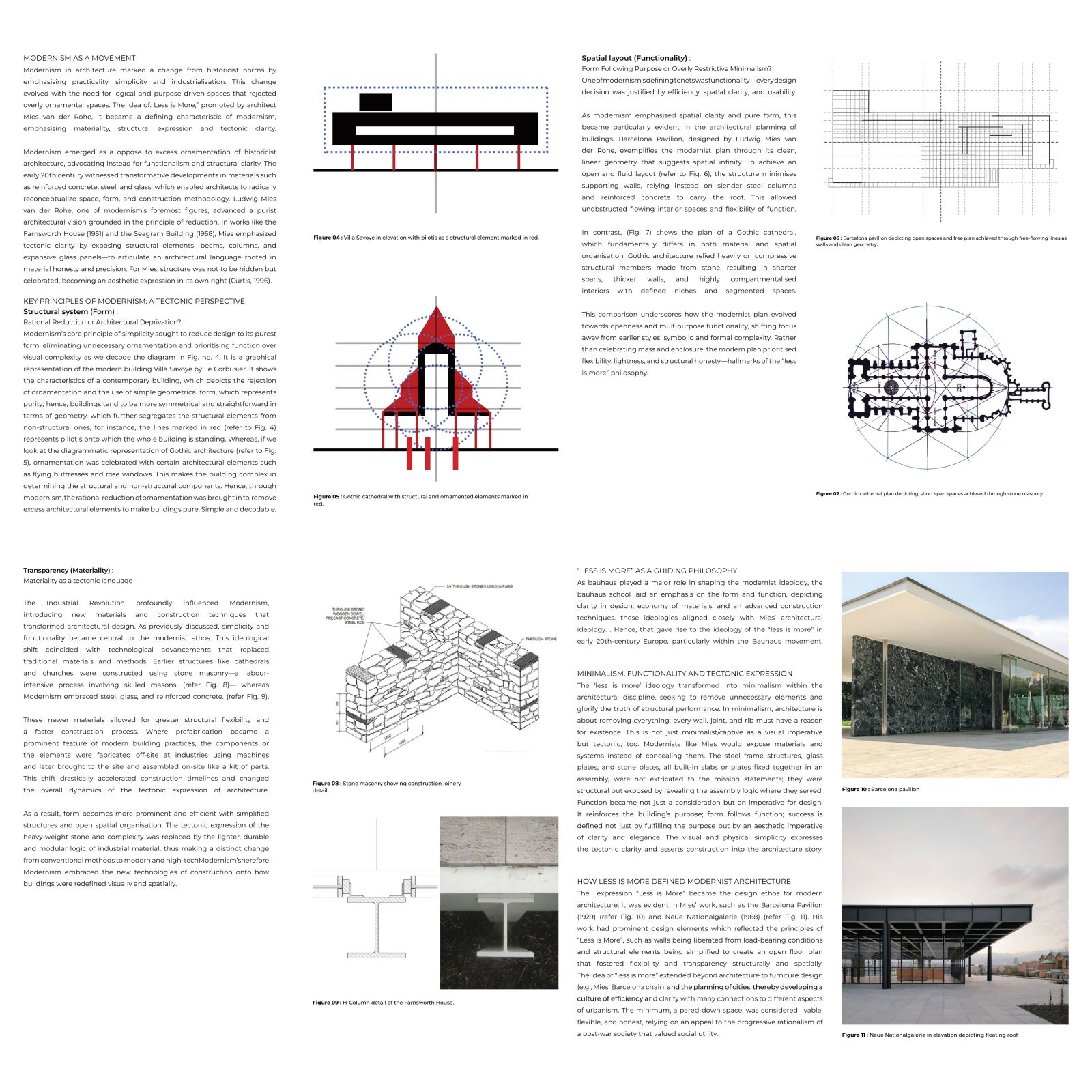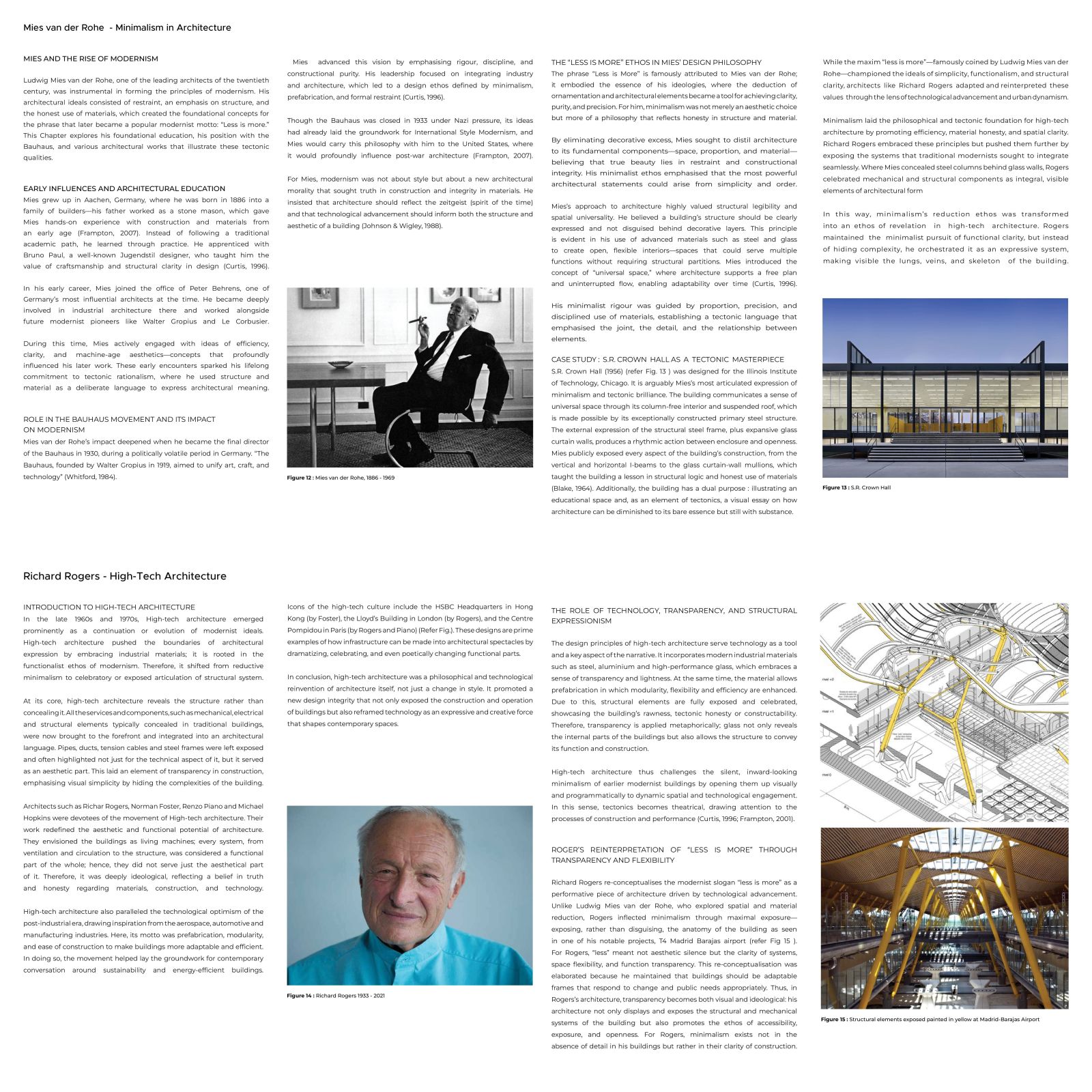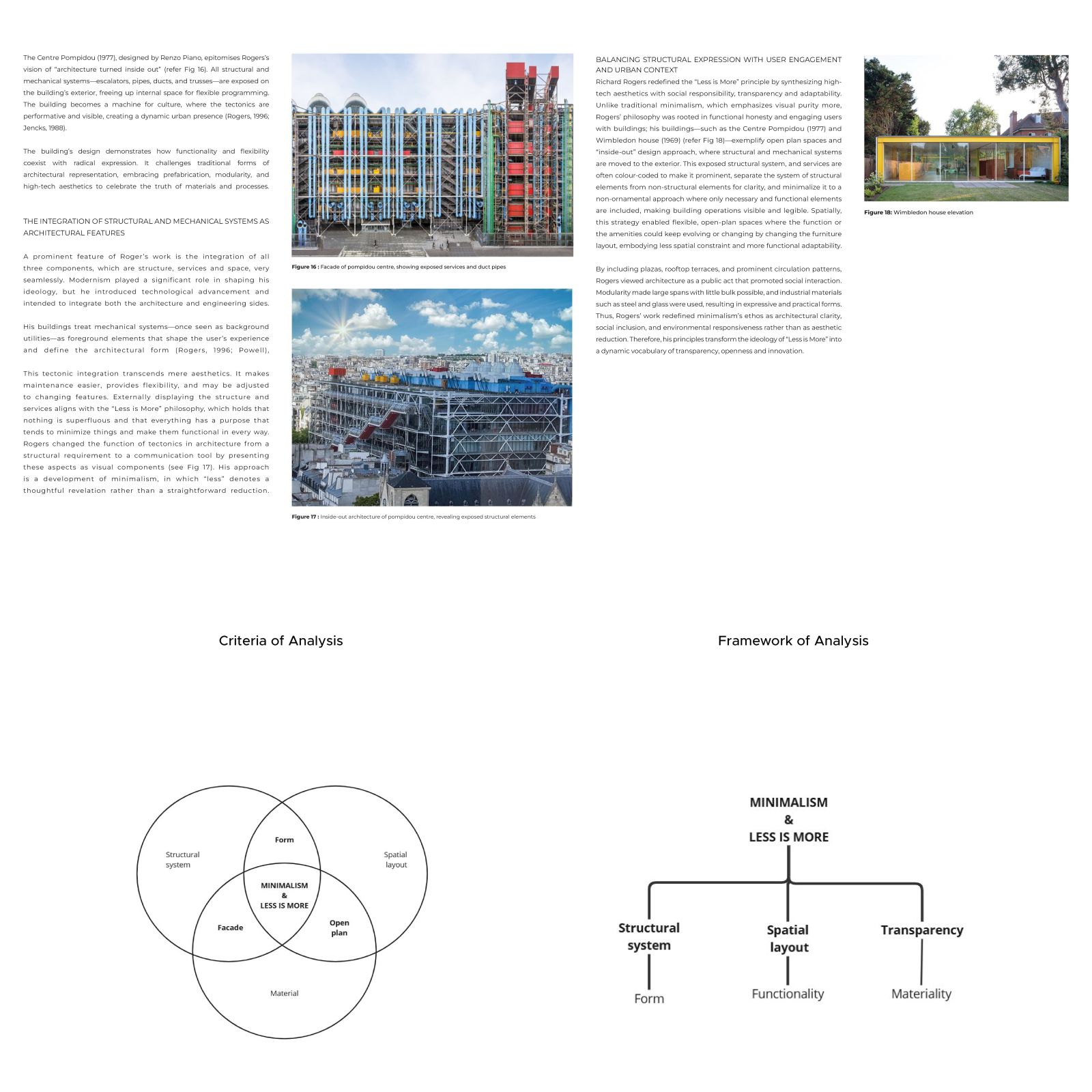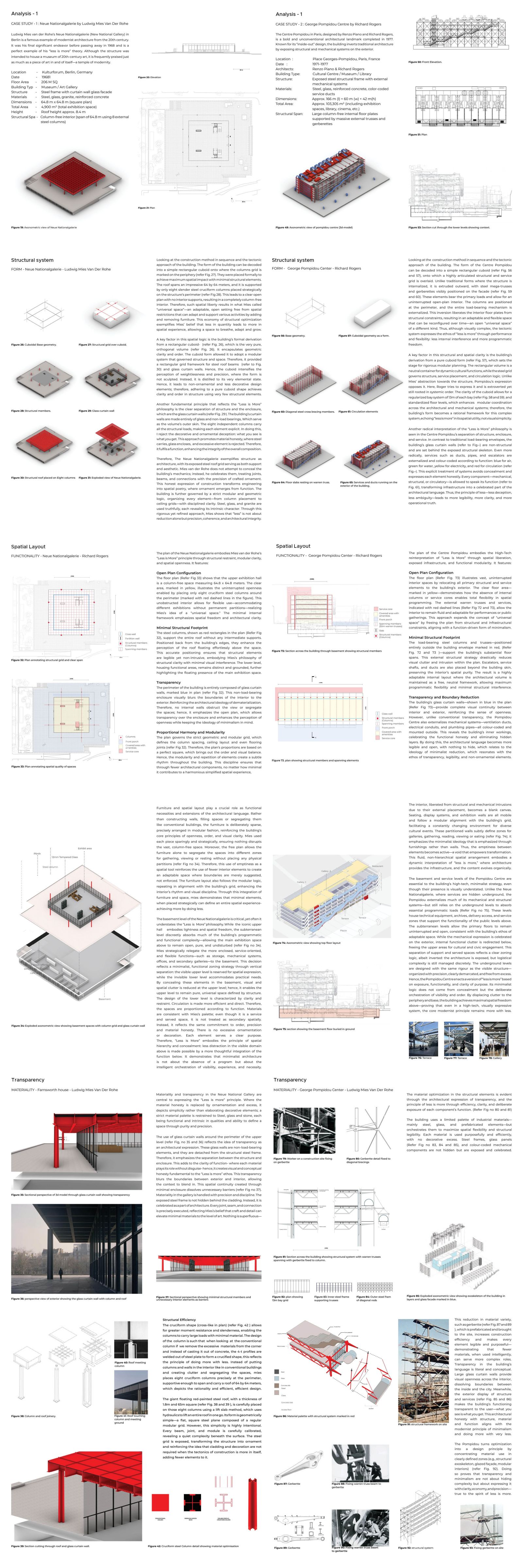Your browser is out-of-date!
For a richer surfing experience on our website, please update your browser. Update my browser now!
For a richer surfing experience on our website, please update your browser. Update my browser now!
This research explores the contrasting approaches to tectonics in architecture by Ludwig Mies van der Rohe and Richard Rogers. Mies, a modernist, emphasized simplicity, structural clarity, and monumentality, creating universal, ornament-free spaces exemplified by works like S.R. Crown Hall. His rigid formalism, however, limited adaptability. Conversely, Rogers, a high-tech pioneer, prioritized transparency, exposed structures, and user engagement, as seen in the Lloyd’s Building and Centre Pompidou. Rejecting monumentality, Rogers created flexible, interactive spaces that foster openness. The study highlights how both architects used tectonics as a medium to balance permanence, adaptability, and user needs within evolving architectural discourse.






